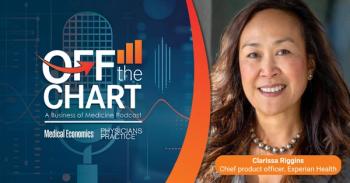
Revenue Cycle Management: Benefits and best practices
What physicians and practice managers need to know.
Revenue cycle management (RCM) describes the part of healthcare administration that focuses on tracking and optimizing revenue collection. While RCM encompasses a number of processes, it is commonly thought of in terms of software systems.
RCM software is big business. One industry observer
Revenue cycle management is most commonly seen in the healthcare industry specifically because of the extreme and increasing complexity of healthcare billing and reimbursement.
Benefits of Revenue Cycle Management
There are two primary benefits of an effective RCM system.
First, there are significant cost reductions associated with automating and digitizing a practice’s claims, billing, and reimbursement functions. The Council for Affordable Quality Healthcare (CAQH) reports that healthcare businesses
A second set of revenue cycle management benefits come from improving revenue collection both from insurance companies and from patients. This responds to
While there are no benchmarks for the benefits of RCM software for individual clinics, data from one
What to look for in an RCM system
While RCM software is most commonly thought of as relating to claim submission, insurance denials, and payment collection, administrators can and should expect that an RCM system provides end-to-end management of the patient/revenue process. For example, RCM software should:
- Gather patient insurance and demographic information before they arrive at the point of care and confirm this information at the time of the patient’s appointment. Many claim denials can be prevented by ensuring complete and accurate collection of patient and insurance data from the beginning.
- Verify the patient’s insurance information and coverage with respect to the recommended course of treatment. Many RCM systems are set up or can be customized to verify insurance coverage automatically, replacing time-consuming phone calls and faxes.
- Collect patient co-pay based on insurance information and recommended treatment.
- Properly code and submit claims to payers using CPT and ICD codes. High-quality RCM software should come pre-loaded with templates to allow for efficient claim submission to common payers such as insurance companies.
- Manage the claims processes, including addressing insurance denials and executing follow-up billing to the patient as appropriate. Quickly appealing denials (when appropriate)
has been shown to reduce claim denial rates. - Provide customizable reporting and analysis tools. These tools will become increasingly important,
according to the University of Illinois in Chicago , as the healthcare system moves from a purely fee-based model to one incorporating more value-based reimbursement. The data provided by an effectively implemented RCM system can allow providers to achieve higher reimbursement rates.
Choosing an outsourced RCM system can be a challenge. Once a system is deployed and staff are trained on its use, it can be difficult to decide to change course. This places pressure on administrators to make the right decision the first time.
Unfortunately, it is not always easy to evaluate something as complex as an RCM from demos alone. While imperfect and subject to manipulation, software review sites such as
Outlook and Conclusion
As noted above, industry observers expect the RCM software market - a proxy for use of RCM systems - to continue to grow rapidly, fueled by the significant benefits that these systems bring to physicians, clinics, and hospitals.
It is likely that the benefits of RCM will increase in coming years. As many medical administrators can confirm, the claims reimbursement process tends to increase, rather than decrease, in complexity over time. As payers, including insurance companies, themselves digitize and automate their processes, providers and administrators relying on legacy systems risk being left behind.
Newsletter
Optimize your practice with the Physicians Practice newsletter, offering management pearls, leadership tips, and business strategies tailored for practice administrators and physicians of any specialty.









